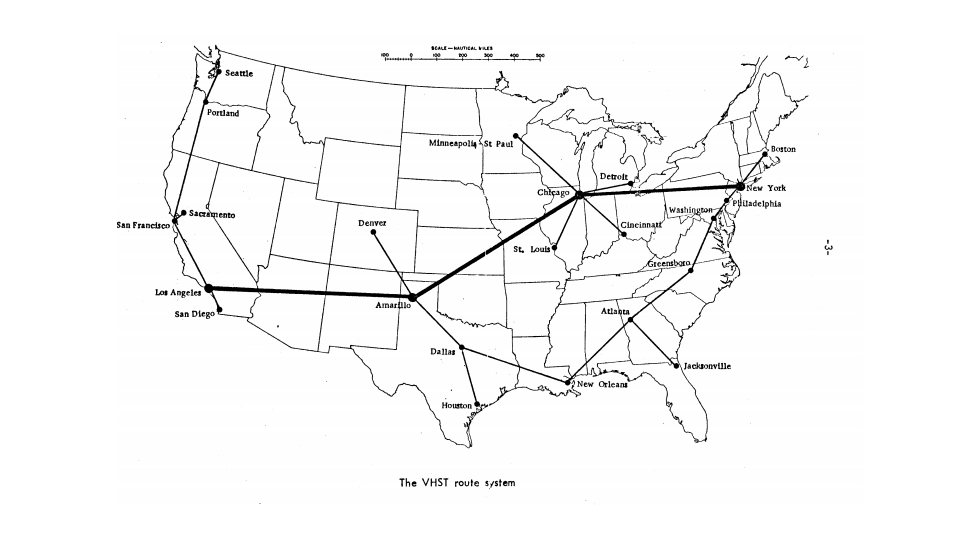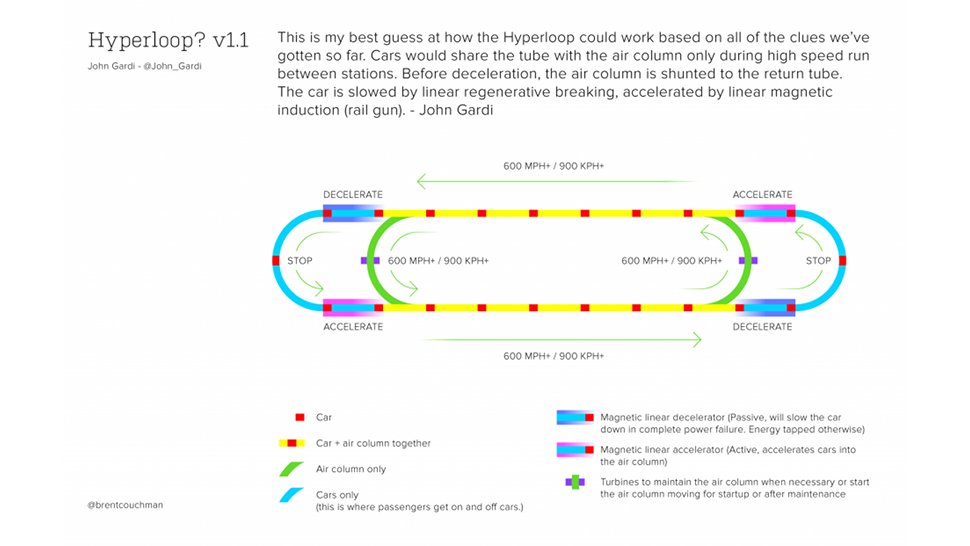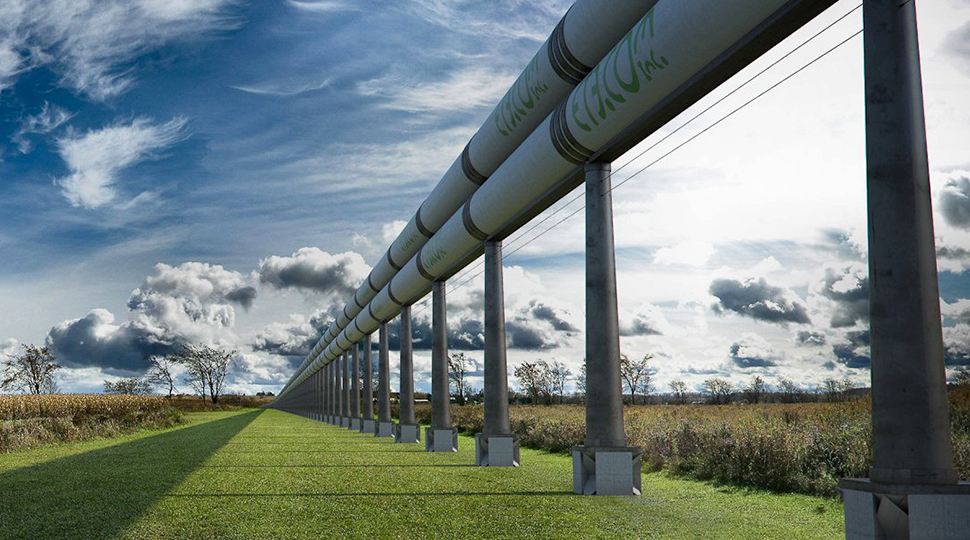Tomorrow, Tesla Motors chief Elon Musk will finally reveal his concept for a high-speed transit system called Hyperloop. The Hyperloop, according to Musk, will be able to whisk you from downtown Los Angeles to downtown San Francisco in roughly the time it takes to watch an episode of Veep (around 22 minutes for those who dislike awesome TV). He’s been intentionally vague about details — but that doesn’t mean we can’t make some educated guesses about how he’s going to pull this off.
Musk’s inspiration for the Hyperloop was borne out of his distaste for another state-of-the-art transit proposal, a high-speed railroad connecting San Francisco and Los Angeles. That project’s estimated $US68 billion price tag would make it the most expensive high-speed line in the world, despite being significantly slower at just a 214kph clip. To put that in context, the Amtrak Acela line maxes out at 241kph, while Japan’s “Bullet Trains” can hit up to 321kph.
If that LA to SF estimate is accurate, Musk’s Hyperloop would average nearly 1126kph, at a tenth of the cost of the existing high speed rail proposal. Or so he claims.
Faster and cheaper is enough to make most people’s ears perk up, but Musk hasn’t provided too many substantive details about how the Hyperloop is supposed to work. Back in May, he described the system as a “cross between a rail gun, the concord, and an air hockey table.” Using this tiny bit of insight and a few other details that he’s divulged, let’s see what we can put together.
What seems certain
Magnetic levitation
There’s a broad consensus that Hyperloop will transport people in magnetically levitated or magnetically propelled pods. This is the same maglev principle used on Japan’s bullet trains, the latest generation of which will average about 482kph once construction is finally complete.
As we’ll see below, virtually every concept for high-speed transit of this kind — on land, at least — relies on magnetic levitation. To achieve ludicrous speeds in any remotely scalable way, you need to eliminate the friction from tracks. That’s tough to achieve, given that stubborn little bugger called gravity.
By using “tracks” and “train wheels” of opposite magnetic polarity, you can achieve movement without introducing any actual physical contact between container and solid ground. Better yet, magnetic levitation doesn’t just provide a source of lift, it can also serve as the thrust to push a container — or car, whatever — down a line. As a maglev expert told The Verge a while back, the speed you can achieve with maglev is limitless — as long as you’re travelling through a vacuum.
Sealed Tubes
Speaking of vacuums, the other huge source of friction is that life-giving air we breathe. That’s why, in order to reach the speeds Musk describes, Hyperloop will almost certainly need to move people through sealed tubes that have had at least some of the air sucked out of them.
Again, as we’ll see below, the best ideas about how to achieve absurdly high speeds involve eliminating as much friction from drag as possible. While you don’t necessarily need to suck all of the air out of a tube to get this done, you definitely need to build a pressurised tube that allows you to control how the air is flowing through them.
Pods, not trains
We’re not talking about mass transit in the traditional sense here. While exact designs vary, all prominent theories rely on “pod” or “capsule” designs, which can hold 4-6 passengers. Elon Musk has publicly called them pods, and even divulged the 2-metre diameter dimension.
Very High Speed Transit System

As first pointed out by BI, the system could be a variant of the Very High Speed Transit System (VHSTS) proposed in a paper published by the Rand Corporation in 1972.
The proposal calls for a MagLev-based underground vacuum tunnel system with a main line running diagonally across the country making a few stops along the way. These stops would serve as regional hubs for connection to other lines. According to Rand, travel between New York and Los Angeles under this system could take as little 21 minutes, achieving speeds as fast as 22,530kph. This wasn’t the first system of its kind either; proposals for a vacuum-sealed MagLv transit date back to the turn of the twentieth century.
An underground solution presents several unique challenges, though, ones that almost certainly wouldn’t fit into Musk’s promise of relative affordability. While we certainly are an incredible number of challenges and costs associated with burrowing for hundreds of miles in heavily populated areas. So it’s probably better to look to the sky.
John Gardi’s Twitter proposal

In recent weeks, engineer John Gardi has become a popular “expert” on Hyperloop because Musk publicly told him that his theory was the closest he’d seen to his own — and indeed, it looks much like what you can piece together from Musk’s limited descriptions.
Gardi’s proposal, highlighted in the graphic above, shows tubes that aren’t complete vacuums because, well, Musk has actually said they won’t be. Somehow the system has to be virtually frictionless, though. Gardi’s tube loop is filled with columns of circulating air that suck pods through from one end of the tube to the other.
In a longer analysis published last week at Motherboard, Gardi compared this to the pneumatic tubes used to transport messages or small packages within buildings. At either end of the loop, cars are blasted into the system by linear magnetic induction, which is the same magnetic phenomenon that powers the absurdly powerful rail guns the military is developing.
Laying the groundwork
Musk has reportedly said that a company called ET3 is on the right track to making the type of super-fast transit he’s thinking about. last week about ET3 The basic principle of the system is similar to the VHSTS described by Rand previously: MagLev containers blasted through a vacuum at very high speeds. I spoke with ET3’s founder and chief Daryl Oster last week, who explained that the system could ultimately transport people from New York to Beijing in just a couple of hours for $US150 a pop. But he says that ET3 designs scale easily and could be used to cover distances as short as five miles. In other words, any time you jump on the freeway, you could be jumping in a capsule instead.
Currently, ET3 is in the process of finding a three-mile stretch of land where it can build a demonstration tube so it can blast a capsule through at nearly 950kph. While there are a few spots under consideration, ET3 is focusing its energy on stretches of land in California because, as Oster points out, the tax payers of the Golden State already spent $US100 million studying the land for a huge mass transit project, so ET3 could save money on environmental impact studies and the like.
According to Oster, ET3 uses 1/50th the energy of high-speed rail. He told me he could build a tube connecting San Francisco and Los Angeles for 1/10th the cost of the high-speed rail proposal — we doubt it’s a coincidence that this is the same savings number thrown around by Musk.
Hyperloop will be elevated, not underground

When Gardi expounded his theories about Musk’s Hyperloop, he described it as an above-ground structure. And Oster agrees that this is the most likely scenario for a system of the California project’s scale. Whenever possible, it’s best to build above ground because according to Oster, building tunnels costs roughly three times more than building elevated eyesores.
At extreme speeds above 6500kph, like those described by the Rand study or ET3’s ludicrously fast New York to Beijing concept, you basically have to tunnel in order to keep the train on as close to a perfectly straight line as possible. Oster says above those speeds, course adjustments have to be extremely gradual over huge distances to the point that any big adjustment is impossible because G forces from moving too quickly would cause people barf all over the pods.
Since a capsule travelling the California coast will only go 1000-1100kph, it won’t get going fast enough to need to go underground. The Hyperloop would almost certainly need to tunnel through cities, mountains, and affluent nimbys, but from a health and safety perspective, it doesn’t need to go underground ground.
But is it ever going to happen?
Musk has said that he has no plans to actually execute his Hyperloop proposal himself. He’s just throwing out an open source, alpha concept to see what people do with it.
Even if Hyperloop is developed into a viable concept that would save taxpayers a bundle of money, assembling the political will to get it built is another issue entirely. Targeting the California high speed rail problem is a good idea because it might get some political traction, but any construction project of this magnitude is going to be met with resistance. Still, if ET3 can garner support for its test route, it could show that there’s willingness for a larger-scale implementation.
The only thing that’s for certain about any of this, though, is that we’ll know a whole lot more on Monday than we do today. And that’s something to be excited about.
Top image via fotomak/Shutterstock.com.
